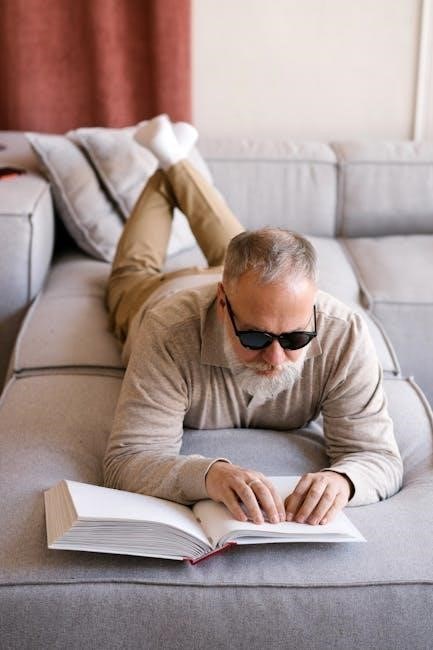Running empowers visually impaired individuals, fostering independence and confidence․ With proper guides and adaptive techniques, they can safely enjoy the benefits of physical activity, building strength and community․
The Importance of Running for Visually Impaired Individuals
Running offers visually impaired individuals a powerful way to enhance physical and mental well-being, fostering independence and confidence․ It provides an opportunity to connect with their surroundings and build resilience․ For many, running becomes a liberating experience, breaking down barriers and challenging stereotypes․ With the right support and tools, visually impaired runners can achieve their goals, whether recreational or competitive․ The sense of accomplishment and joy derived from running can be transformative, empowering individuals to embrace new challenges and thrive in all aspects of life․ Running truly embodies freedom and empowerment․
Overview of Guide Running
Guide running is a collaborative partnership between a visually impaired runner and a sighted guide, enabling safe and enjoyable physical activity․ Guides provide verbal cues and physical assistance, such as tethering, to navigate obstacles and maintain rhythm․ This method fosters trust and communication, ensuring the runner’s independence and confidence․ Guide running adapts to individual needs, whether for casual exercise or competitive training․ It not only promotes physical health but also builds camaraderie and empowers visually impaired individuals to embrace new challenges․ By bridging the gap between visual and tactile experiences, guide running opens doors to a world of possibilities for runners of all abilities․
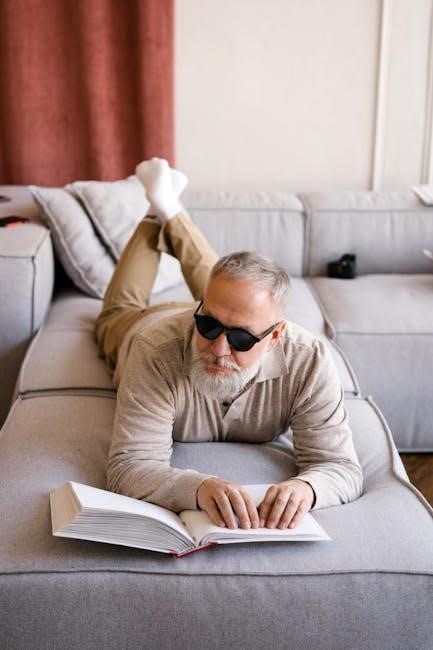
Understanding the Needs of Visually Impaired Runners
Visually impaired runners require clear communication, adaptive tools, and safety measures to navigate effectively, ensuring an inclusive and empowering running experience․
Unique Challenges Faced by Visually Impaired Runners
Visually impaired runners encounter distinct obstacles, such as navigating uneven terrain, detecting stairs, and relying on verbal cues or assistive devices for navigation․ They must also contend with environmental factors like lighting conditions and crowds, which can complicate real-time adjustments․ Additionally, the inability to visually assess distances or obstacles requires heightened trust in guides or technology, adding a layer of dependency․ These challenges underscore the importance of adaptive strategies and accessible tools to ensure safe and independent participation in running activities․ Addressing these issues is crucial for creating an inclusive environment that empowers visually impaired individuals to embrace running confidently․
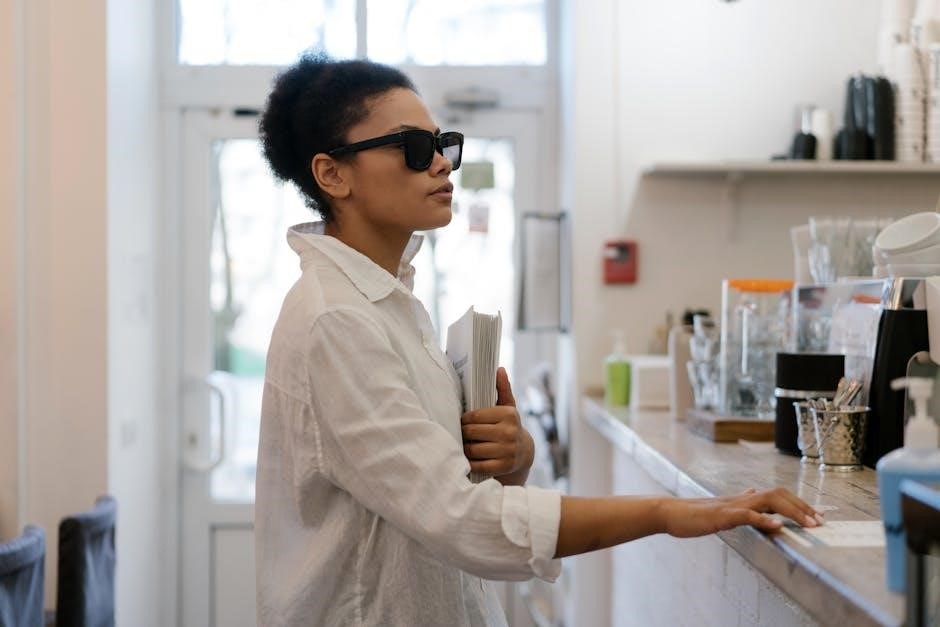
Safety Considerations
Visually impaired runners rely heavily on guides, verbal cues, and tactile markings to navigate safely․ Clear communication and accessible technology are essential for minimizing risks and ensuring independence․
General Safety Tips for Visually Impaired Runners
Visually impaired runners should always run with a trusted guide or use assistive devices like GPS-enabled wearables․
Clear verbal communication between the runner and guide is crucial to navigate obstacles․
Wearing bright, reflective clothing enhances visibility to others․
Familiarizing oneself with the route beforehand, using tactile pathways when available, can increase confidence and safety․
Carrying identification and emergency contact information is also recommended, ensuring help is accessible if needed․
These strategies help visually impaired runners enjoy the sport independently and securely․
Using Tactile Markings and Verbal Cues
Tactile markings, such as raised dots or lines, provide essential navigation aids for visually impaired runners․ Verbal cues from guides, like “step up” or “turn left,” are equally vital․ These cues should be clear, concise, and consistent to avoid confusion․ Guides may also use physical gestures, like tapping the runner’s arm to indicate direction changes․ Combining tactile feedback with verbal instructions enhances safety and coordination․ This dual approach allows runners to move confidently, relying on both touch and sound to navigate their surroundings effectively during training or races․ Such strategies ensure a seamless and supportive running experience for all participants․

Choosing the Right Gear
Accessible running shoes, moisture-wicking apparel, and reflective accessories are essential for visually impaired runners․ Wearable technology, like GPS-enabled devices, enhances safety and independence during workouts․
Accessible Running Shoes and Apparel
Visually impaired runners benefit from footwear with tactile markings and durable soles for better traction․ Moisture-wicking fabrics and reflective materials enhance comfort and visibility․ Apparel should be lightweight and breathable, incorporating sensory-friendly designs to avoid irritation․ Proper fit is crucial to prevent discomfort during movement, while accessible closures like Velcro or magnetic zippers simplify dressing․ High-contrast colors improve visibility for guides, and integrated storage pockets can securely hold essentials like identification or navigation tools․ These features ensure safety, comfort, and independence, allowing runners to focus on their performance and enjoy the therapeutic benefits of running․
Essential Accessories for Visually Impaired Runners
Visually impaired runners rely on assistive devices for enhanced safety and independence․ Tactile markers on paths provide sensory feedback, while GPS-enabled wearables offer real-time navigation․ Screen readers integrated into smartwatches deliver audio cues, aiding route tracking; Waist belts with reflective strips increase visibility to others․ Tethers or guide belts improve communication between runner and guide, ensuring synchronized movements․ Identification tags or bracelets with emergency contacts add an extra layer of safety․ These tools collectively empower runners to navigate confidently, combining technology with practical design to create a seamless and enjoyable running experience․ They are indispensable for both solo and guided runs․

Techniques for Running with a Guide
Effective communication and synchronization are key when running with a guide․ Verbal cues and tactile feedback ensure smooth navigation, fostering trust and a harmonious rhythm during the run․
Communication Strategies for Runner and Guide
Clear and consistent communication is vital for a successful running partnership․ Guides should provide verbal cues about obstacles, terrain changes, and directions, while runners communicate their pace and comfort level․ Using simple commands like “step up,” “narrow path,” or “slow down” helps avoid confusion․ Both parties should agree on signals beforehand, ensuring seamless interaction․ Regular check-ins during runs allow adjustments and maintain trust․ This collaborative approach enhances safety and ensures an enjoyable experience for both the runner and the guide․ Effective communication fosters independence and confidence for visually impaired runners, making every run a positive and empowering experience․
Proper Use of Tethers or Guide Belts
Tethers or guide belts are essential tools for visually impaired runners, providing stability and communication between the runner and guide․ The tether should be held lightly but firmly, allowing the runner to sense the guide’s movements․ A short, adjustable strap or a looped belt is ideal, keeping the tether slightly taut to prevent jerking․ Guides should avoid pulling or pushing, instead using verbal cues alongside physical guidance․ The tether enhances safety, enabling the runner to navigate obstacles confidently․ It also helps synchronize strides, fostering a smooth and coordinated running experience․ Proper use of tethers ensures independence and reduces reliance on constant verbal instruction․
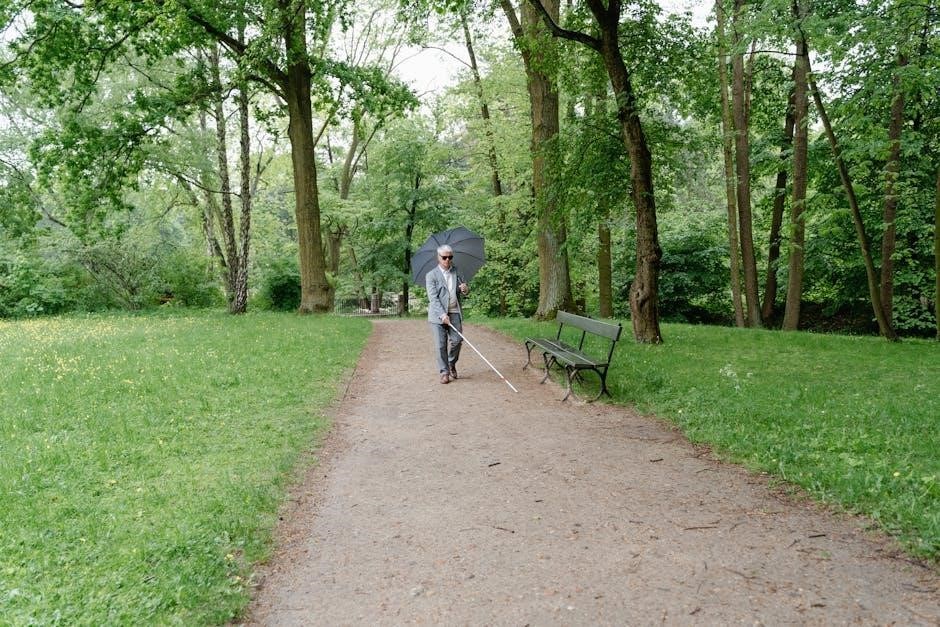
Training and Building a Routine
Consistent practice and structured schedules are key for visually impaired runners․ A well-planned routine builds confidence, strength, and endurance, incorporating strength exercises and assistive technology for support․
Creating a Personalized Training Plan
A personalized training plan for visually impaired runners begins with assessments of fitness levels, goals, and preferences․ Setting clear, achievable objectives ensures progress and motivation․ The plan should balance running with strength and flexibility exercises to enhance overall athleticism․ Incorporating rest and recovery strategies is crucial to prevent injuries and maintain consistency․ Regular evaluations allow adjustments to keep the plan engaging and effective․ Utilizing assistive devices, like GPS tools, can enhance safety and tracking․ Accessibility is key, ensuring the runner can navigate and execute the plan confidently․ A well-tailored plan fosters independence, builds stamina, and supports long-term success in running․
Incorporating Strength and Flexibility Exercises
Strength and flexibility exercises are vital for visually impaired runners to improve stability, balance, and overall performance․ Core exercises, such as planks and seated stretches, enhance posture and reduce injury risk․ Balance training, like single-leg stands or tactile-guided movements, boosts coordination and confidence․ Flexibility routines, including hamstring and hip stretches, improve mobility and comfort during runs․ Guides can assist by providing verbal cues or tactile guidance to ensure proper form․ These exercises can be adapted to suit individual needs, promoting independence and safety․ Regular strength and flexibility workouts complement running, fostering a well-rounded fitness routine tailored to the runner’s abilities and goals․

Using Assistive Devices and Technology
Assistive devices like screen readers, GPS tools, and wearable tech enable visually impaired runners to navigate independently․ These tools enhance safety, providing real-time feedback and guidance during runs․
Screen Readers and GPS Navigation Tools
Screen readers and GPS navigation tools are essential for visually impaired runners, enabling them to access critical information independently․ These technologies convert text and environmental data into audible feedback, helping runners navigate routes and track performance․ GPS devices provide real-time location updates, while screen readers assist with app interactions, ensuring runners stay informed and connected․ Together, these tools enhance safety, confidence, and overall running experiences for visually impaired individuals, allowing them to fully engage in their training and maintain an active lifestyle with greater ease and independence․
Wearable Technology for Accessibility
Wearable technology plays a vital role in enhancing the running experience for visually impaired individuals․ Smart glasses with object detection capabilities allow users to “see” their surroundings through audio feedback, identifying obstacles and navigating paths․ GPS-enabled wearables provide real-time navigation, helping runners stay on course․ Additionally, tactile feedback devices, like vibrating wristbands, signal changes in terrain or direction, offering non-visual cues․ These tools integrate with screen readers, ensuring seamless accessibility․ By leveraging wearable technology, visually impaired runners gain greater independence, safety, and confidence, enabling them to fully participate in and enjoy running activities with ease and precision․

Community and Support
Local running groups and organizations provide vital connections, fostering inclusivity and shared experiences for visually impaired runners, while promoting accessibility and mutual encouragement within the community․
Local Running Groups and Clubs
Local running groups and clubs play a crucial role in supporting visually impaired runners․ These organizations often provide trained guides, adaptive equipment, and inclusive environments․ Many groups, such as Para-Guides, actively seek volunteers to assist visually impaired athletes․ By joining these groups, runners can connect with like-minded individuals, share experiences, and gain confidence․ Additionally, these clubs often host workshops and events focused on accessibility and safety, ensuring that visually impaired runners have the resources they need to thrive․ Such communities not only promote physical fitness but also foster a sense of belonging and empowerment among their members․

Overcoming Challenges
Visually impaired runners face unique obstacles, such as navigating unfamiliar terrain and relying on guides․ Building trust, improving communication, and using adaptive tools help address these challenges effectively․
Addressing Common Fears and Anxieties
Visually impaired runners often experience fears like losing balance or navigating obstacles․ Building trust with guides and using assistive devices can alleviate these anxieties․ Open communication and consistent training help runners feel secure and confident․ Additionally, gradual exposure to new environments and scenarios reduces uncertainty․ Technology, such as screen readers and GPS tools, provides real-time feedback, enhancing safety and independence․ By addressing these concerns systematically, runners can focus on their performance and enjoy the benefits of running․ Support from guides and access to adaptive tools play a crucial role in overcoming these challenges and fostering a positive running experience․
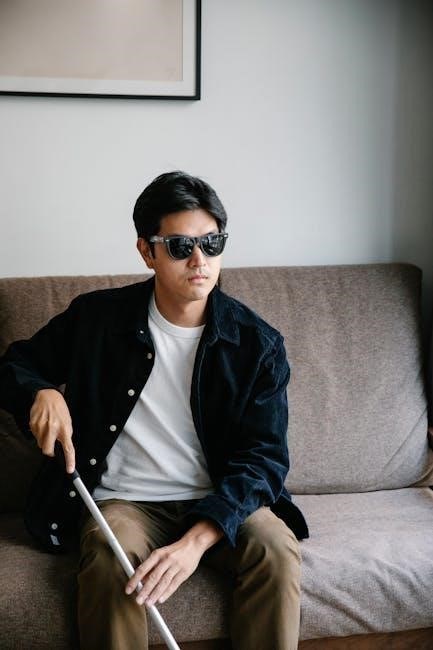
Finding Guide Runners and Resources
Locate licensed guides through organizations like United In Stride or local para-guide groups․ These resources connect visually impaired runners with trained volunteers, ensuring safe and enjoyable experiences․
How to Find a Licensed Guide
To find a licensed guide, start by contacting organizations like United In Stride or local para-guide groups․ These organizations often have databases of trained volunteers who can assist visually impaired runners․ Additionally, search online using keywords like “blind athletes [your city]” to locate nearby resources․ Many communities also host workshops or events where guides and runners can connect․ Ensure the guide is certified and experienced in assisting visually impaired individuals to guarantee a safe and enjoyable running experience․
Additional Resources and Organizations
Several organizations and resources support visually impaired runners and their guides․ United In Stride offers a “Find a Guide” program, connecting runners with licensed guides nationwide․ The National Federation of the Blind provides accessibility tools and training, including podcasts like “Access On” that discuss assistive technologies․ Additionally, local running clubs and para-guide groups often recruit volunteers and organize events for visually impaired athletes․ These resources ensure that runners have access to trained guides, adaptive equipment, and a supportive community to enhance their running experience and independence․
